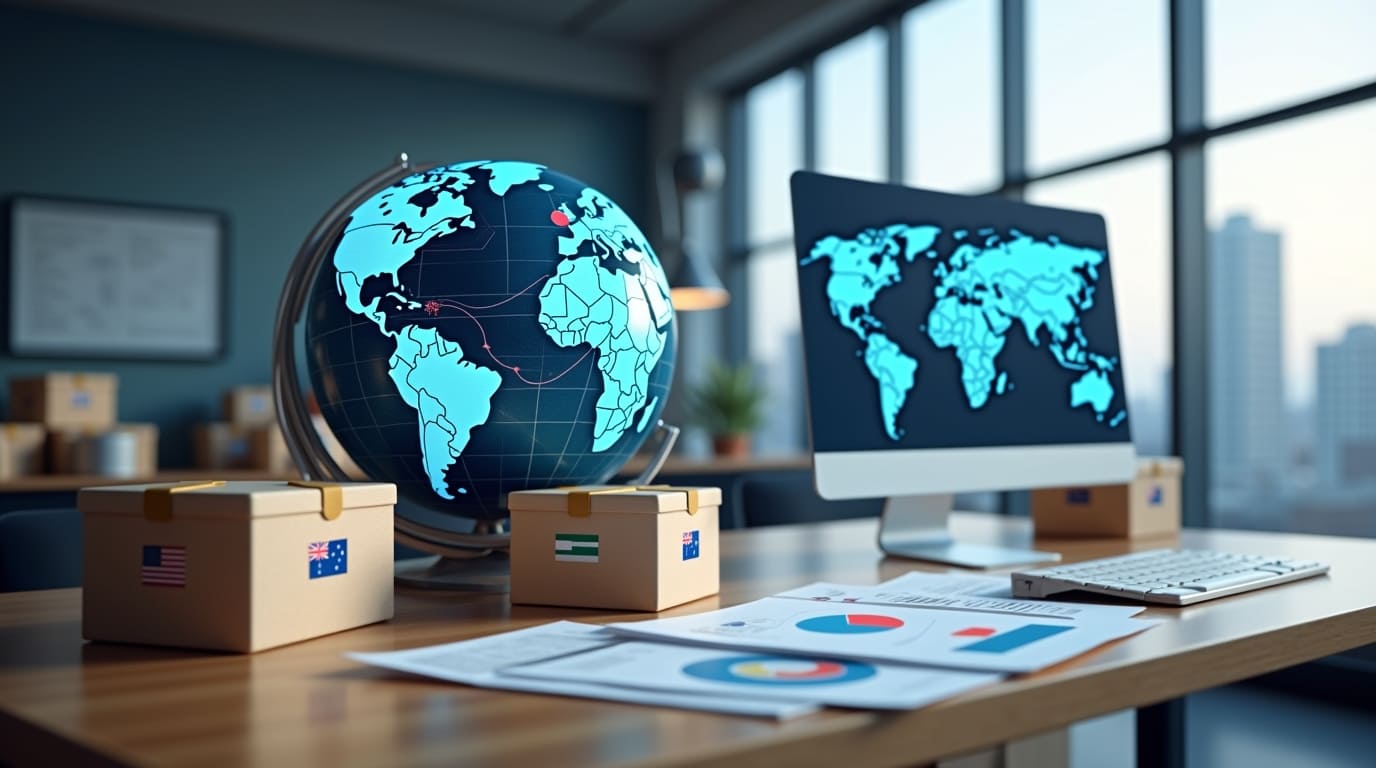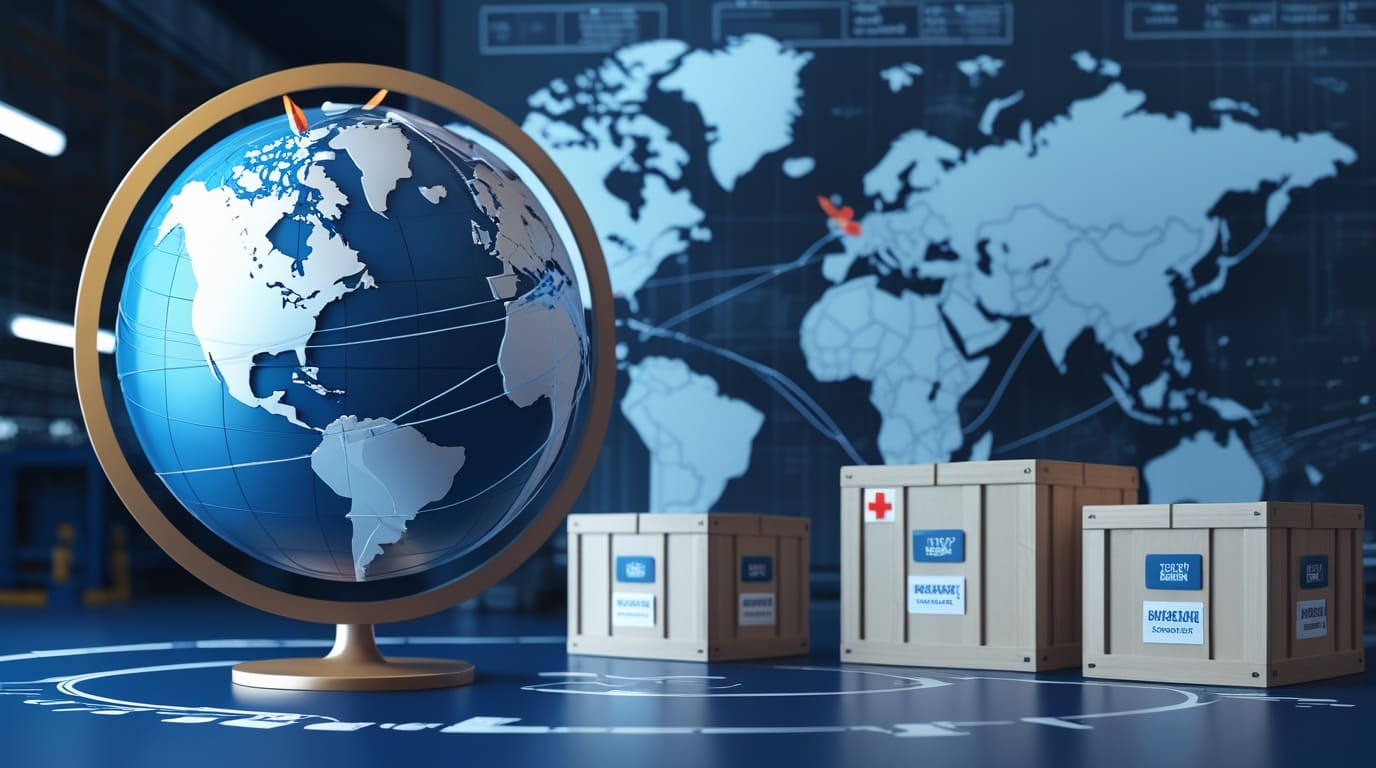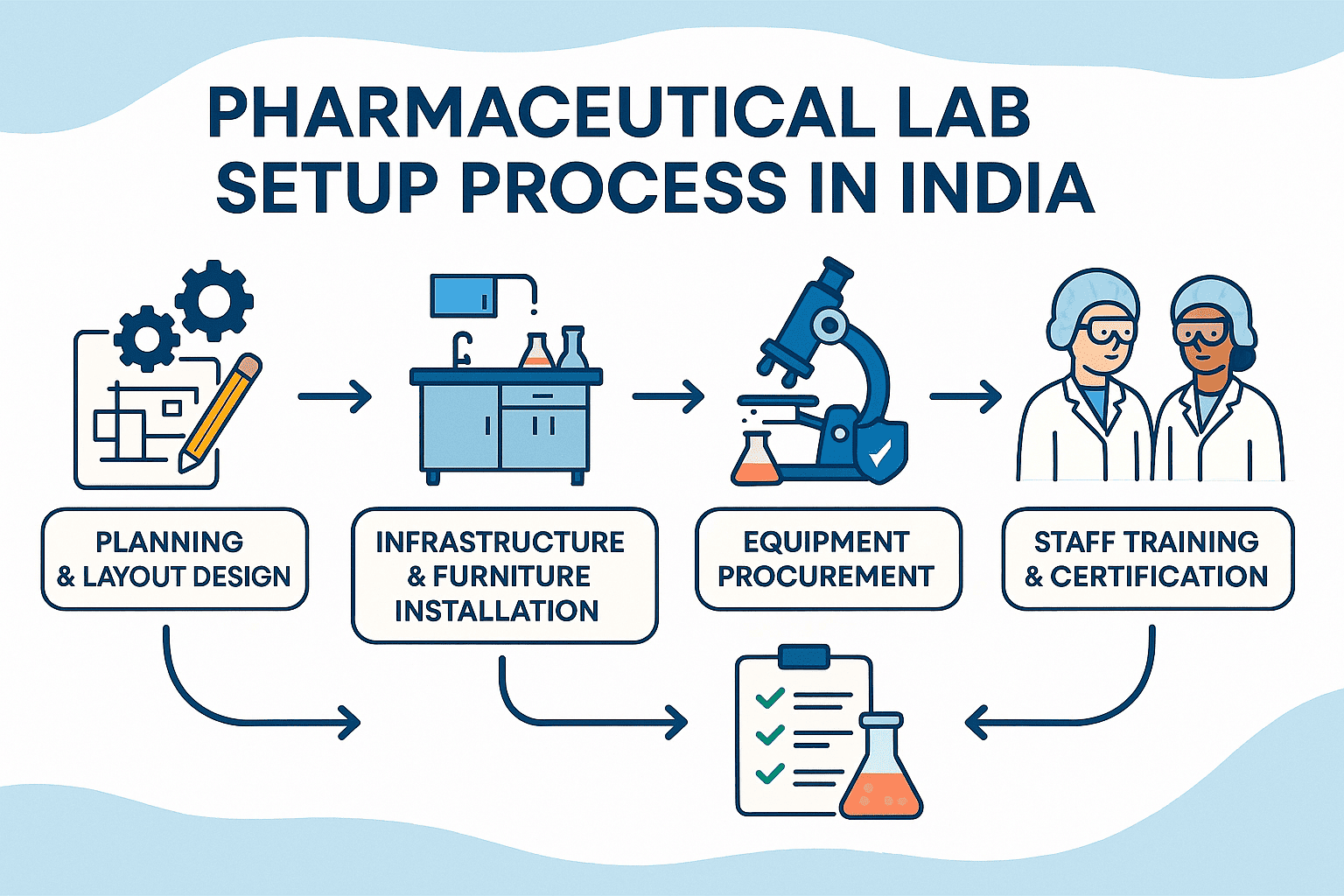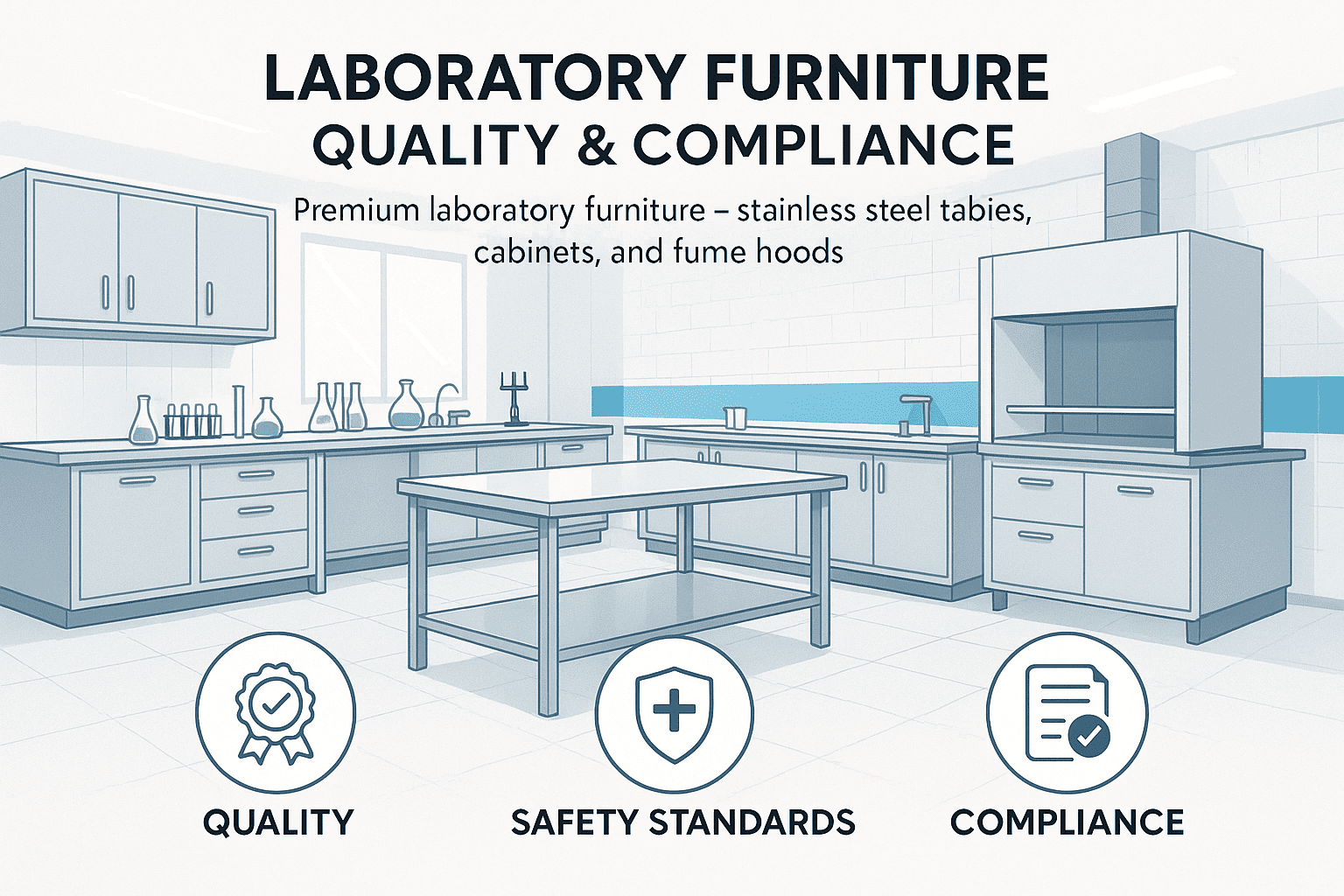
In today’s global marketplace, manufacturers have a tremendous opportunity to expand their reach and increase profits through international trade. Exporting goods to foreign markets not only boosts revenue but also strengthens brand credibility and diversifies business risks. However, successful exporting requires more than just shipping products abroad — it demands a well-structured approach known as export management.
This comprehensive guide will walk you through each stage of the export process — from preparing your business for global trade to managing supply chains efficiently. Whether you’re a small-scale producer or a large manufacturer, understanding these steps will help you navigate the complexities of international commerce with confidence.
1- Understanding Export Management
Before diving into the export process, it’s essential to understand what export management entails. It is the systematic process of planning, coordinating, and controlling all activities related to exporting goods and services. This includes identifying target markets, ensuring compliance with international regulations, managing documentation, handling logistics, and maintaining customer relations overseas.
A robust export management plan helps manufacturers optimize operations, reduce risks, and streamline communications between various departments involved in the export cycle. It serves as a blueprint to ensure that each export transaction runs smoothly — from order placement to final delivery.
2- Assessing Export Readiness
The first step is to evaluate whether your business is ready to export. Many manufacturers underestimate the importance of internal preparation. Assessing export readiness involves reviewing production capacity, product suitability, financial stability, and workforce expertise.
Ask questions like:
- Can we handle increased production volume for international orders?
- Are our products compliant with global standards?
- Do we have the financial resources to support marketing and logistics costs?
Once you confirm your readiness, you can move forward to identifying potential markets that align with your products.
3- Conducting Market Research

Market research forms the foundation of any successful export strategy. Analyze potential markets based on demand, competition, pricing trends, and trade barriers. Study consumer behavior, distribution networks, and local regulations.
Use tools like trade portals, export databases, and government trade departments to gather data. Consider visiting trade fairs or collaborating with foreign distributors to gain firsthand market insights. By understanding your target market thoroughly, you can tailor your approach and minimize risks.
4- Developing a Market Entry Strategy
Once you have identified your target market, determine how you want to enter it. You can choose between direct exporting (selling directly to foreign buyers) or indirect exporting (through intermediaries such as export agents or distributors).
Each method has its advantages. Direct exporting offers higher profit margins and better control over branding, while indirect exporting reduces risk and simplifies management for beginners. The right approach depends on your resources, product type, and market familiarity.
5- Legal Compliance and Documentation
International trade involves multiple legal and regulatory requirements. Manufacturers must comply with export laws, customs regulations, and product standards in both home and destination countries. Proper documentation ensures smooth customs clearance and timely delivery.
Essential export documents include:
- Commercial invoice
- Packing list
- Bill of lading or airway bill
- Certificate of origin
- Export license (if applicable)
- Insurance certificate
Accurate paperwork prevents delays and avoids costly penalties. Consider working with an export consultant or freight forwarder for guidance on documentation.
6- Pricing and Payment Methods
Pricing for exports differs from domestic pricing because it includes additional costs such as shipping, insurance, duties, and exchange rates. Conduct a detailed cost analysis before setting export prices.
Common international payment methods include:
- Advance payment: Buyer pays before shipment (low risk for exporters).
- Letter of credit: A secure option where banks guarantee payment upon document verification.
- Open account: Payment after delivery, suitable for trusted partners.
Selecting the right payment method ensures financial security and builds trust with international buyers.
7- Managing Supply Chain Logistics

Efficient supply chain logistics play a vital role in ensuring timely and safe product delivery. Logistics management includes packaging, labeling, warehousing, shipping, and inventory control.
Manufacturers should select reliable logistics partners and ensure their packaging meets international transport standards. Proper coordination between suppliers, freight forwarders, and customs agents minimizes delays and damage risks. Digital tools and tracking systems can further improve visibility and efficiency across the supply chain.
By investing in optimized supply chain logistics, businesses can maintain customer satisfaction, reduce transportation costs, and strengthen their reputation globally.
8- Quality Control and Product Adaptation
Quality is a key determinant of success in international markets. Different countries may have unique safety and quality standards, so ensure your products comply with all relevant certifications.
In some cases, product adaptation may be necessary — such as changing labeling language, adjusting voltage standards, or redesigning packaging to meet cultural preferences. This demonstrates professionalism and respect for local market needs, enhancing your competitiveness abroad.
9- Building Strong Global Relationships
Exporting is not just about transactions — it’s about building long-term partnerships. Establishing trust with international clients, distributors, and suppliers ensures sustainable success.
Communicate transparently, deliver on promises, and offer post-sale support. Participate in trade fairs, maintain regular contact with customers, and invest in localized marketing campaigns. These efforts strengthen your brand’s presence and open doors to new business opportunities.
10- Embracing Technology and Global Trade Solutions
Modern exporting relies heavily on technology. Adopting global trade solutions such as digital documentation systems, online marketplaces, and automated tracking tools can simplify complex export operations.
Platforms that integrate customer management, inventory control, and payment systems help manufacturers monitor every aspect of the export cycle in real-time. Leveraging technology ensures accuracy, improves efficiency, and enhances decision-making.
Digital transformation is no longer optional — it’s essential for manufacturers looking to compete globally.
11- Risk Management and Insurance

Every export transaction involves risks — from political instability to currency fluctuations. A proactive risk management strategy safeguards your business from unforeseen challenges.
Obtain export credit insurance to protect against payment defaults and cargo insurance to cover goods during transit. Stay updated on international trade laws, tariff changes, and geopolitical developments. Risk mitigation ensures smooth operations and financial stability.
12- Continuous Improvement and Feedback
Exporting is an ongoing learning process. Continuously analyze your export performance, collect feedback from foreign partners, and identify areas for improvement. Regular performance reviews allow you to refine pricing strategies, logistics processes, and marketing efforts.
Staying adaptable and innovative ensures long-term success in the ever-changing global market.
Conclusion
Exporting offers manufacturers limitless potential for growth — but it demands careful planning, compliance, and execution. By mastering export management, optimizing supply chain logistics, and leveraging modern global trade solutions, manufacturers can confidently expand their business across borders.
With the right strategy, technology, and partnerships, your brand can transform from a local producer into a recognized global player — achieving sustained growth and worldwide recognition.









